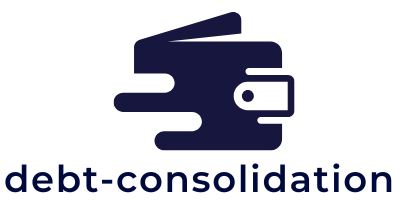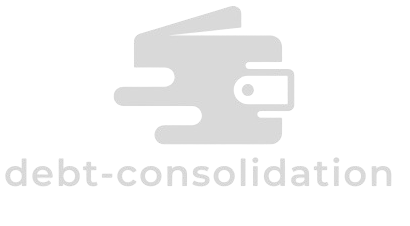Glossary of Financial Terms (Debt Consolidation & Credit)
A record of borrowing and repayment activity over a period of time that reflects your ability to manage and pay your debt obligations.
Debt Consolidation — Combining multiple debts into a single loan or repayment plan, usually with a lower interest rate.
Consolidation Loan — A loan taken to pay off multiple debts at once, simplifying payments.
Debt Management Plan (DMP) — A structured program organized by a credit counseling agency to repay debts systematically.
Balance Transfer — Moving debt from one account or credit card to another, often to reduce interest rates.
Interest Rate — The cost of borrowing money, usually expressed as a percentage.
Annual Percentage Rate (APR) — The yearly interest rate including fees and costs associated with a loan.
Fixed Interest Rate — An interest rate that does not change during the loan term.
Variable Interest Rate — An interest rate that can change over time based on market conditions.
Loan Term — The period over which a loan must be repaid.
Monthly Payment — The regular amount paid each month toward the consolidated loan.
Principal — The original amount of debt being consolidated, excluding interest.
Accrued Interest — Interest that has accumulated but has not yet been paid.
Amortization — Gradual repayment of a loan in fixed installments over time.
Secured Loan — A loan backed by collateral, such as a home or car.
Unsecured Loan — A loan not backed by collateral, based on creditworthiness.
Credit Counseling — Professional advice to help manage debt and plan repayment.
Applicant — A person who applies for a consolidation loan.
Cosigner — Someone who guarantees repayment of the loan if the borrower defaults.
Refinancing — Replacing an existing loan with a new one to get better terms, like lower interest or longer term.
Debt-to-Income Ratio (DTI) — The ratio of total monthly debt payments to monthly income, used to determine loan eligibility.
Late Payment — A missed or delayed payment on a loan or debt.
Late Fee — A penalty charged for missing a scheduled payment.
Default — Failure to repay a loan as agreed, potentially leading to legal action.
Foreclosure — Legal process where a lender takes ownership of collateral due to nonpayment.
Lien — A legal claim on property to secure repayment of a debt.
Bankruptcy — Legal status for individuals or businesses unable to repay debts.
Debt Settlement — Negotiating with creditors to pay less than the full debt amount.
Overdraft — When withdrawals exceed available funds in an account.
Outstanding Balance — The remaining amount owed on a loan.
Credit Score — A numerical measure of creditworthiness.
Credit Report — A record of a person’s credit history.
Credit Limit — Maximum amount a lender allows a borrower to use on a credit account.
Revolving Credit — Credit that can be repeatedly borrowed and repaid, such as credit cards.
Installment Loan — A loan repaid in regular, fixed payments.
Prepayment Penalty — A fee for paying off a loan earlier than agreed.
Snowball Method — Debt repayment strategy paying off smallest debts first to build momentum.
Avalanche Method — Debt repayment strategy paying off highest-interest debts first to save money.
Equity — The value of an asset minus any debts owed on it.
Financial Hardship — Difficulty in meeting financial obligations due to income loss or expenses.
Income Verification — Documentation proving a borrower’s income for loan approval.
Origination Fee — A fee charged by lenders for processing a new loan.
Settlement Agreement — A negotiated arrangement to repay part of a debt.
Debt Restructuring — Modifying loan terms to make repayment more manageable.
Credit Utilization Ratio — Percentage of available credit currently being used.
Grace Period — Time allowed to make a payment without penalties.
Loan Approval — Confirmation that a lender agrees to provide a loan.
Delinquency — Late or missed payments reported to creditors.
Consolidation Strategy — A plan to combine debts efficiently, often to reduce interest and monthly payments.
Debt Reduction Plan — A strategy to gradually pay off debts over time.
Loan Agreement — A legal contract outlining the terms of a loan.
Payment Plan — Schedule of payments agreed upon between borrower and lender.
Refinance Option — The possibility to replace an existing loan with a new one to improve terms.
Unsecured Credit — Credit or loan not backed by collateral.
Secured Credit — Credit or loan backed by collateral.
Monthly Budget — A plan for managing income and expenses, often used in debt consolidation planning.
Debt Burden — The overall amount of debt relative to income and financial capacity.
Financial Planning — Organizing finances, including debt management, to achieve stability.
Adjustable-Rate Loan — A loan with an interest rate that can change periodically.
Arrears — Money that is overdue on a loan or debt.
Automatic Payment — A scheduled deduction from a bank account to pay a loan or debt automatically.
Bank Loan — Money borrowed from a bank to be repaid with interest.
Borrower — A person or entity that takes a loan.
Budgeting — Planning income and expenses to manage finances effectively.
Car Title Loan — A loan secured by a vehicle title.
Cash-Out Consolidation — Taking a consolidation loan that pays off debts and provides extra cash.
Charge-Off — When a lender writes off a debt as unlikely to be collected.
Closed-End Loan — A loan with a fixed repayment schedule and amount.
Co-Borrower — A person who shares responsibility for a loan.
Credit Counseling Agency — An organization that helps consumers manage debt.
Credit Freeze — A restriction placed on a credit report to prevent new credit accounts.
Credit Inquiry — A request to check a person’s credit report.
Credit Monitoring — Tracking changes in a credit report to detect issues.
Debt Ceiling — The maximum level of debt a borrower can take on.
Debt Consolidation Calculator — A tool to estimate payments and interest savings.
Debt Cycle — A pattern of borrowing and repaying debt repeatedly.
Debt Forgiveness — Canceling all or part of a debt.
Debt Payment Priority — Ranking debts by importance or interest rate for repayment.
Default Notice — A formal warning from a lender about missed payments.
Deferment — Postponing loan payments temporarily.
Direct Consolidation Loan — A U.S. federal program allowing students to consolidate federal loans.
Disbursement — The act of paying out loan funds to the borrower.
Early Repayment — Paying off a loan before the scheduled term ends.
Electronic Funds Transfer (EFT) — Moving money electronically for loan payments.
Financial Literacy — Knowledge of managing money, credit, and debt.
Forbearance — Temporarily reducing or suspending loan payments due to hardship.
Grace Period Interest — Interest that accrues during a grace period.
Installment Payment — A portion of the loan paid regularly over time.
Interest-Only Loan — A loan where initial payments cover only interest, not principal.
Joint Account — A credit or bank account shared by two or more people.
Late Payment Reporting — Recording late payments on a credit report.
Line of Credit — A maximum loan amount that can be borrowed as needed.
Loan Consolidation Fee — Charges associated with combining multiple debts.
Loan Repayment Schedule — A timeline showing when payments are due.
Mortgage Consolidation — Combining multiple home-related debts into one loan.
Negative Amortization — When payments are less than interest, increasing the loan balance.
Payoff Amount — Total money required to fully repay a debt.
Payment Allocation — How payments are applied to principal, interest, and fees.
Personal Bankruptcy — Legal process to discharge an individual’s debts.
Post-Secondary Loan Consolidation — Combining student loans after college.
Predatory Lending — Unfair or abusive loan practices.
Principal Reduction — Decreasing the original amount owed on a loan.
Refinance Calculator — Tool to estimate benefits of refinancing a loan.
Repayment Options — Different ways to pay back a loan.
Secured Consolidation Loan — A consolidation loan backed by collateral.
Short-Term Loan — A loan with a brief repayment period.
Subsidized Loan — A loan where the lender or government pays interest during certain periods.
Unsubsidized Loan — A loan where interest accrues immediately.
Variable-Rate Consolidation Loan — A consolidation loan with an interest rate that may change.
Write-Off — When a lender removes a debt from their accounting books, usually due to nonpayment.
Account Statement — A detailed record of all transactions and balances for a loan or credit account.
Adjustment — A change made to a loan balance or payment terms.
Alternative Financing — Nontraditional methods of borrowing, such as peer-to-peer loans.
Annual Fee — A yearly charge for maintaining a credit account.
Bankruptcy Discharge — Legal cancellation of certain debts through bankruptcy.
Borrowing Capacity — The maximum amount a person can borrow based on income and credit.
Break-Even Point — The point where debt consolidation saves as much money as it costs.
Car Loan Consolidation — Combining multiple car loans into a single payment.
Cash Flow — The movement of money in and out of personal finances.
Charge Card — A card that requires full monthly payment, often used in consolidation strategies.
Closed Account — A credit account that is no longer active.
Collection Account — A debt sent to a collection agency due to nonpayment.
Consolidation Strategy — A plan to merge multiple debts efficiently.
Consumer Debt — Debt incurred by individuals for personal use.
Credit Agreement — A legal contract detailing the terms of a loan or credit.
Credit Exposure — The total amount a lender is at risk of losing.
Credit Limit Increase — A higher allowable borrowing amount on a credit account.
Credit Monitoring Service — A service tracking credit activity to detect issues.
Credit Portfolio — A group of loans or debts held by a lender or borrower.
Credit Report Dispute — Challenging inaccurate information on a credit report.
Credit Risk — The likelihood a borrower will default on a loan.
Debt Agreement — A contract outlining repayment terms between borrower and lender.
Debt Burden Ratio — Ratio of total debt payments to income, used to measure financial stress.
Debt Consolidation Company — A business offering services to merge debts.
Debt Load — The total amount of money owed by an individual.
Debt Priority — Ranking debts based on urgency or interest rate for repayment.
Debt Recovery — Process of collecting unpaid debts.
Default Judgment — A court ruling against a borrower who fails to respond to debt claims.
Electronic Billing — Receiving and paying loan bills electronically.
Financial Assessment — Evaluating a person’s financial situation to plan debt consolidation.
Financial Obligation — A responsibility to repay a debt or make a payment.
Forbearance Agreement — An arrangement to temporarily delay payments.
Grace Period Balance — The remaining debt that accrues interest during a grace period.
High-Interest Debt — Debt with a high interest rate, often prioritized in consolidation.
Income-Based Repayment — Loan repayment plan based on borrower’s income.
Interest Accrual — The process of interest adding up on unpaid debt.
Interest Capitalization — Adding unpaid interest to the principal balance of a loan.
Joint Liability — Shared responsibility for repaying a debt.
Lender — A financial institution or person providing a loan.
Lien Release — Legal removal of a lender’s claim on property after repayment.
Loan Consolidation Program — A formal program to combine multiple loans.
Loan Disbursement Date — The date loan funds are issued to the borrower.
Loan Forgiveness — Canceling part or all of a loan under specific conditions.
Loan Modification — Changing the terms of a loan to make repayment easier.
Loan Servicer — A company managing the day-to-day handling of a loan.
Outstanding Debt — Total unpaid balance on all debts.
Payment Holiday — A temporary break from loan payments.
Secured Debt — Debt backed by collateral.
Unsecured Debt — Debt not backed by collateral.
Variable Rate — Interest rate that changes based on a benchmark or market rate.
Written Agreement — A documented contract between borrower and lender regarding debt.

